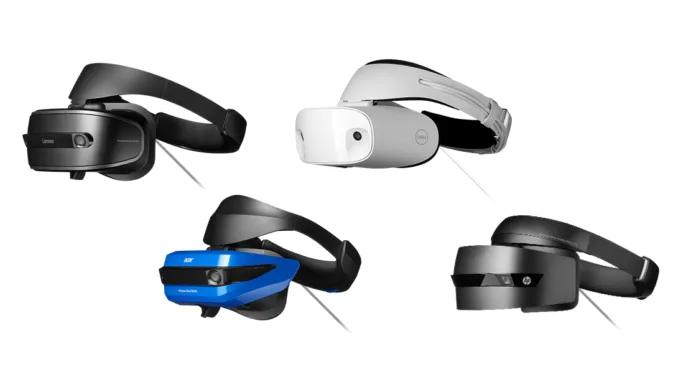Summary
- Revealing Microsoft’s Strategic Shift: Examine the critical choice Microsoft made to end support for Windows Mixed Reality, which drastically changed the augmented and virtual reality technology market.
- Effect on Users and Industry Dynamics: Recognise the ramifications for users, hardware, and software when Microsoft discontinues Windows Mixed Reality for Steam VR and the Mixed Reality Portal app, changing the nature of competition in the virtual reality market.
- HoloLens 2 Proceeds Despite Modifications: Learn about the company’s dedication to sustaining the HoloLens 2, which is geared towards enterprises, and gain insight into Microsoft’s mixed reality endeavors going forward, even in the face of downsizing.
- Behind the Scenes: Downsizing and Resignations: Learn about the internal issues that Microsoft’s VR division is facing, such as job losses, the shelved HoloLens 3 plans, and the resignation of important employees like Alex Kipman due to sexual misconduct accusations.
- Prospective Considerations and Industry Consequences: Explore rumors regarding how Microsoft’s move may affect the VR market as a whole and lead to the discontinuation of the company’s augmented reality headset range, which will force mixed reality technologies to undergo further analysis.
Microsoft made a big decision by formally ending the “mixed reality” feature for Windows. This decision affects both software and hardware that uses augmented and virtual reality technologies. Let’s examine the history, the declaration, and the wider ramifications of this action.
Table of Contents
Windows Mixed Reality’s History
Microsoft’s introduction to the vivid universes of expanded and computer-generated reality was Windows Blended Reality, which was presented in 2017 as a feature of a Windows 10 update. Clients can now get to these state-of-the-art advancements on their laptops through the Blended Reality Entrance application, particularly assuming that they have viable VR headsets.
Notice of Discontinuation
Microsoft, however, delivered a shocking revelation when they said, “Windows mixed reality is deprecated and will be removed in a future release of Windows.” Users and the tech community are confused by this sudden decision and are wondering why a feature that was supposed to revolutionize user experiences was discontinued.
Also Read: Windows 10: For Environmental Impact Microsoft Ending Support
Aspects Affected by Termination
This choice has consequences that go beyond a simple announcement. The Windows Mixed Reality for Steam VR app and the Mixed Reality Portal app, which were first released to rival virtual reality industry leaders HTC and Oculus, are being shut down by Microsoft. The action suggests a substantial change in the business’s approach to the virtual reality market.
Microsoft’s VR Division is being downsized
This discontinuation is in line with Microsoft’s larger efforts to reduce its VR division. HoloLens 3’s cancellation and significant employee layoffs impacting mixed reality initiatives indicate the tech giant’s new priorities. These moves make one wonder where Microsoft’s augmented and virtual reality efforts will go in the future.
Impact of Mixed Reality Platforms
Windows Blended Reality worked as a passage to a broad cluster of computer-generated reality encounters. Other equipment makers, including Acer, Dell, Lenovo, Asus, HP, and Samsung, have made blended reality headsets that work in with the stage notwithstanding Microsoft’s own HoloLens. The undertaking-centered HoloLens 2 is expected to keep on being accessible despite the stopping.

Move up to Windows 11 and HoloLens 2
It’s intriguing to take note of what Microsoft means to continue supporting the HoloLens 2, giving various moves up to the $3,500 headset as well as a free Windows 11 overhaul. This action points to a calculated decision to prioritize some products in the mixed reality ecosystem while dumping others.
An explanation of virtual and augmented reality
Understanding the differences between augmented and virtual reality is essential to appreciating the significance of this choice. Microsoft has seamlessly blended the two worlds when using mixed reality. Text, sounds, designs, and video are superimposed on certifiable pictures in expanded reality to make an improved and more exhaustive view. Then again, augmented reality involves PC-produced encounters to submerge clients in a fake world completely.
Charges and Appointment
The takeoff of HoloLens President Alex Kipman in 2022 because of allegations of sexual unfortunate behavior has additionally convoluted the circumstances. This incident highlights internal difficulties in Microsoft’s mixed reality projects, along with the discontinuation and downsizing.
Layoffs and Ceasing Operations
Microsoft announced 10,000 job cuts in a move that rocked the industry; many of the affected employees were involved in mixed reality projects. This includes the company halting the development of its AltspaceVR app, indicating a more extensive reorganization of Microsoft’s efforts in the realm of extended reality.
Summary of Mixed Reality Features
In summary, Windows Mixed Reality served as a gateway to an extensive selection of virtual reality games, applications, and experiences. HoloLens 2, intended for use in enterprise settings, is anticipated to continue receiving updates and support even after this discontinuation.
Report from Business Insider
Microsoft decided not to proceed with the HoloLens 3 project, according to a 2022 Business Insider report. This action may signal the beginning of the end for Microsoft’s augmented reality headset line, casting doubt on the company’s dedication to this particular tech market niche.
Conclusion
Microsoft’s decision to remove the mixed reality feature from Windows marks a significant turning point for the tech sector. The choice to keep supporting some features while dropping others makes one wonder how the company will develop going forward in the augmented and virtual reality markets. Both industry watchers and users will be closely observing Microsoft as it makes its way through these unfamiliar waters.
Disclaimer:
AI was used to conduct research and help write parts of the article. We primarily use the Gemini model developed by Google AI. While AI-assisted in creating this content, it was reviewed and edited by a human editor to ensure accuracy, clarity, and adherence to Google's webmaster guidelines.


